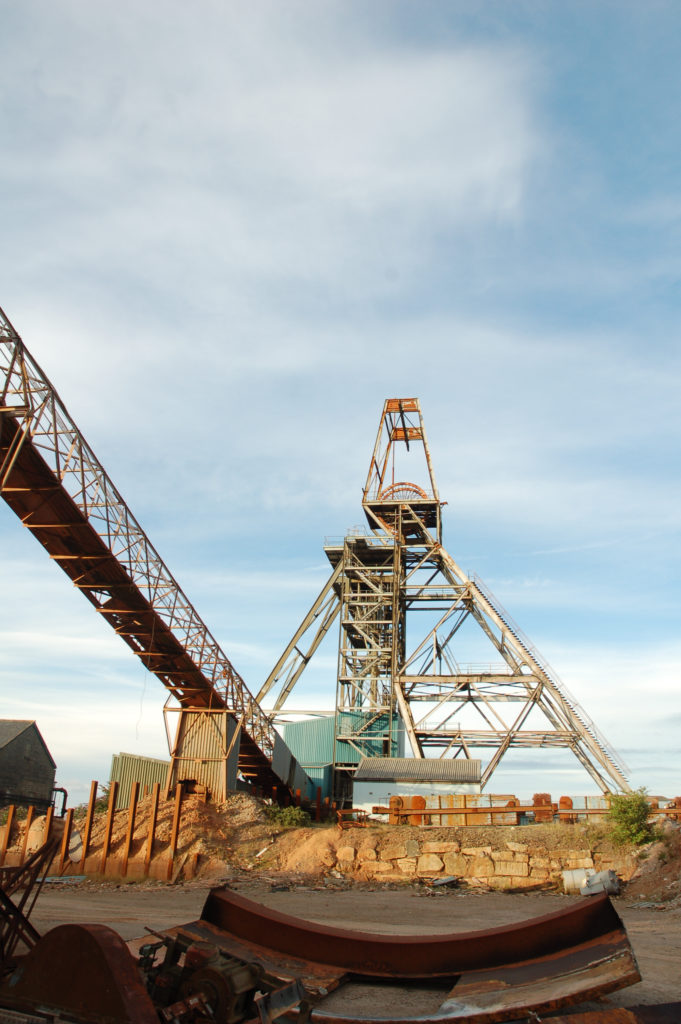
The recent acquisition of a historic tin mine in Cornwall could see it return to production. But it is not so much a case of reopening as launching a modern operation on an old site.
The acquisition of South Crofty in July 2016 by Strongbow Exploration means the Cornish tin-mining industry could resume. But how was the deal actually put together?
The share purchase agreement between the key players, Galena Special Situations Fund, Tin Shield Production and Strongbow, was closed on 11 July, giving 100% ownership of South Crofty to Strongbow Exploration (UK), the UK subsidiary of Strongbow Exploration, a Canadian company listed on the Toronto Venture Exchange.
The mine was last operated by Western United Mines (WUM), which went into administration in 2013, following the failure of its backer, Canadian firm Celeste Mining Corporation, to make a funding payment under its earn-in-agreement. Since then, Galena and Tin Shield had been funding the operation of the mine under care and maintenance.
Prior to the deal, Galena held security over WUM’s assets, having lent it about £3.2m; Tin Shield had also made loans of £1m plus. To enable WUM to come out of administration, Strongbow provided £110,000 under a company voluntary arrangement (CVA) to allow a distribution to the unsecured creditors.
It also paid £33,000 to buy assets. Strongbow acquired WUM and Cornish Minerals (Bermuda), but not parent company Cornish Minerals (in administration). Part of the CVA was the requirement that the holding company, Cornish Minerals Ltd (UK), released the £11,525,758 intragroup debt owed to it by WUM.
Debt Conversion
A fundamental aspect of the negotiated deal was the agreement by Galena to give up its status as a secured creditor of WUM, and participate in the project on an equity basis instead. This was achieved by converting Galena’s debt into ten million shares of 10p each, in WUM, the discharge and release by Galena of its debt and security, and the acquisition of those 10 million shares by Strongbow UK for a consideration comprising:
· Two million shares in Strongbow Exploration Inc (with a value of C$400,000)
· One million shares in Strongbow upon an increased water-discharge permit (to 25,000 cubic metres per day from the existing 10,000 cubic metres per day)
· C$2m in 2018, wither by the issues of Strongbow shares to that value, or as a cash/shares mis
· Two million Strongbow shares, issued on the earlier of the receipt of a positive feasibility study or commencement of commercial production and
· If a production decision is made, a percentage of the net present value of the project will be paid
There is also a provision that 47.5% of any consideration payable to Galena is paid to Tin Shield subject to regulatory requirements. Strongbow also paid US$80,000 to Tin Shield as consideration on closing. Strongbow has assumed all costs of maintaining the project, from 01 November 2015 onwards, including the reimbursement to Tin Shield of C$318,000. Strongbow assumed full responsibility for all operating costs from March 2016, when the deal was signed.
It was crucial to close the transactions on time to enable the project to retain the necessary permits and authorisations to operate as a mine. These would have been lost had the companies gone into liquidation, which was the only realistic alternative.
The Future
So what are the next steps to advance the project? Of paramount importance is the implementation of water-treatment trials, leading to the application for the increased water-discharge permit. On the basis that the water-treatment trials go as planned, the application for the increased water-discharge permit could be made in Q1 of 2017.
Another priority is to carry out the necessary work to support a preliminary economic assessment of the operation to demonstrate that the mine is viable. This will involve a programme of exploration drilling with a view to increasing the available resource to build on the existing resource as stated in the NI 43-101 Mineral Resource Estimate, which was filed on 31 May 2016. The drilling will target potential mineralisation occurring at depths of 400 – 900 metres.
The primary resource of the South Crofty project is tin. The mine will be valued and investment decisions made primarily on the basis of the recoverable tonnage of tin. Nevertheless, due regard will be paid to opportunities to recover other minerals, such as copper and zinc, if economically viable.
The new Chief Operating Officer of the project, Owen Mihalop, points out that technological advances made over the past 20 years will have a positive impact on the mining plan. For example, historically, there was a great deal of drilling with hand-held drills, while the new mining method will be mechanised, so the operators will be handling technologically advanced equipment from the safety of an air-conditioned cab. Likewise, the handling of the waste material – everything that is extracted except the retained minerals – will be executed in accordance with modern mining methods. One advantage of South Crofty is the availability of large areas of deep underground where extraction has taken place. Rather than removing the waste (tailings) to a surface waste facility (tailings dam), this material would be de-watered to a toothpaste like consistency and the paste returned underground to backfill these voids. As Mihalop says “It is important to recognise we are not simply re-opening South Crofty as it was before. We are opening a new mine on the site, using the advantages of existing infrastructure and known mineral resources. There is an old adage, that the best place to find a new mine is next to an old mine. And we are doing exactly that.”
Original article published in Mineral Planning, Haymarket Business Media (issue 167, October).
